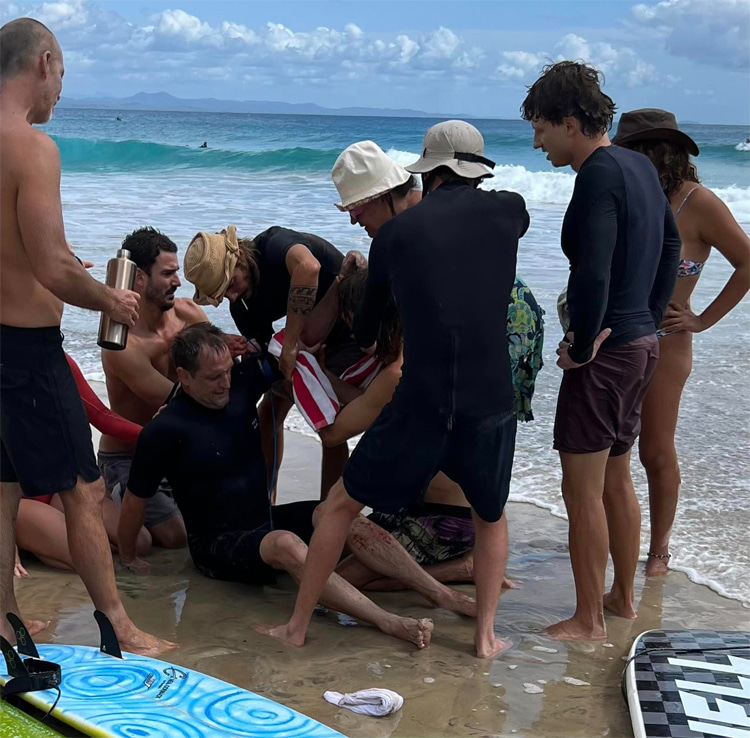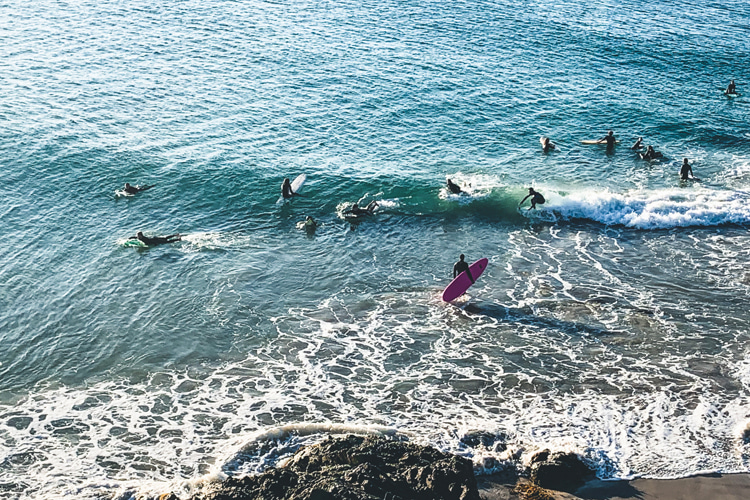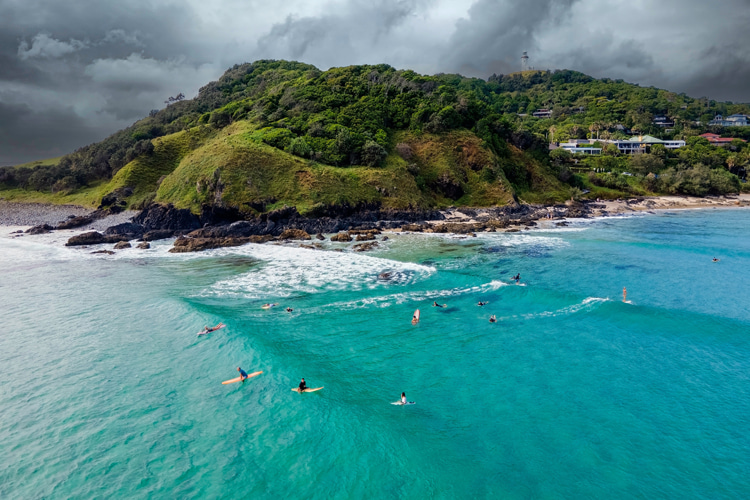Surfboard leashes will be mandatory in the waves of Byron Bay, New South Wales, Australia.
Byron Bay, a popular surfing destination in Australia, has seen a recent surge in debates regarding surfing safety, particularly the use of leg ropes.
Byron Shire Council has unanimously passed a motion to make surf leashes compulsory for surfers, with hefty fines imposed on those who do not comply.
The decision comes after former pro surfer Mathew Cassidy suffered a severe arm injury caused by a loose longboard at Wategos Beach.
A portion of his arm was removed by a longboard fin that had become detached when another female surfer fell off it and plunged into the water.
The board sliced through arteries in Mr. Cassidy's arm and split his bicep, nearly causing him to bleed out on the shore.
After the incident with the dislodged board, Mr. Cassidy described seeing a "large piece of flesh soaring through the air, accompanied by a significant amount of blood."
He managed to cover the injury with his wetsuit and surf back to the shore.

A Hipster Trend
Mr. Cassidy instructed a nearby person to use a leg rope as a makeshift tourniquet to control the bleeding, which he believes ultimately saved his life.
On the beach, he spent an hour being supported by "some absolutely exceptional individuals."
Finally, he was transported by ambulance and then helicopter to a Gold Coast hospital.
Cassidy's accident in February 2023 sparked conversations about the risks associated with the "hipster" trend of ditching leg ropes, which has become increasingly popular among longboard surfers.
Councilor Cate Coorey, who proposed the motion, believes the new regulation might change the surfing culture and promote safety for all beachgoers.
While some argue that surfers are a rebellious community, many already use leashes and support the new rule.
Enforcement of the regulation will be challenging, as it would require proving that a surfer was not wearing a leg rope and had seen a notice before entering the water.
To encourage compliance, the council plans to launch media and promotional campaigns, emphasizing the importance of following "the spirit of the measure."

Fines of Up to $1,100
Despite the difficulties in enforcement, Councilor Coorey is confident that the introduction of leg rope rules and the associated fines will make people think twice about their actions.
Surfers not wearing a leg rope in Byron Bay could be punished with an on-the-spot fine of $75.
However, the maximum fines imposed by a court can be up to $1,100.
Coorey, who put forward the motion, noted that the new rule is about prioritizing the safety of others.
While most surfers already wear leg ropes, the rule aims to address those who do not.
"The knowledge that you could get fined does make people think twice. You do need a stick every now and then to go with the carrot," stated Councilor Coorey.
Cassidy supports the council's decision, stressing the importance of staying safe in the lineup.
"It sends the right message that people are starting to take it seriously, that surf safety is something we should have top of mind when we enter the water," he said.
The surfer believes that many surfers who don't use leg ropes are more concerned with their image and the perception of returning to the roots of longboarding than safety.
He said, "I wouldn't want to be the guy that unfortunately decides not to wear a leg rope and hurts a kid."
The motion has also led to discussions about the impact of surfing's growing popularity on people's well-being.
The increasing number of people in the water, including inexperienced surfers, has heightened concerns about the risks of not using surfboard leashes.
Priority is Safety and Not Tradition
Longboard rider and former Byron resident Ron Hughes, who has been surfing since the 1960s, believes that leg ropes do not impede the use of the board and that the growing popularity of surfing makes it more dangerous to ride without one.
"You have to be pretty capable of riding without a leg rope in today's surf. In years gone by, it wouldn't matter so much because it would only be you and one or two others on the water," said the veteran wave rider.
However, some traditionalists argue that riding without a leg rope is the way it started and how it should be done.
The use of old mal surfboards, made before 1966/67, also presents a challenge, as they do not have a place to attach a leg rope.
Nevertheless, Hughes acknowledges that the risks associated with not using a leg rope in today's crowded surf outweigh the desire to maintain the original surfing style.
"Sometimes it gets stuck between your toes, which can be a bit awkward, but normally you wouldn't be able to tell that you have a leg rope on."
Byron Shire Council's decision to enforce leg ropes has opened up discussions on how to balance tradition with the need for increased safety measures.
As Byron Bay and other popular surf destinations continue to attract more visitors, ensuring the safety of all beachgoers will become an increasingly pressing concern.
In the meantime, the new leg rope regulation in Byron Bay promotes surf safety and raises awareness of the potential risks associated with loose surfboards.
As the council works to install signage and implement an education campaign, the surfing community will undoubtedly continue to grapple with the question of how to preserve the sport's traditions while prioritizing the safety of everyone in the water.
Byron Shire Mayor Michael Lyon hopes other councils and the New South Wales government will follow Byron Shire's lead in mandating leg ropes.
